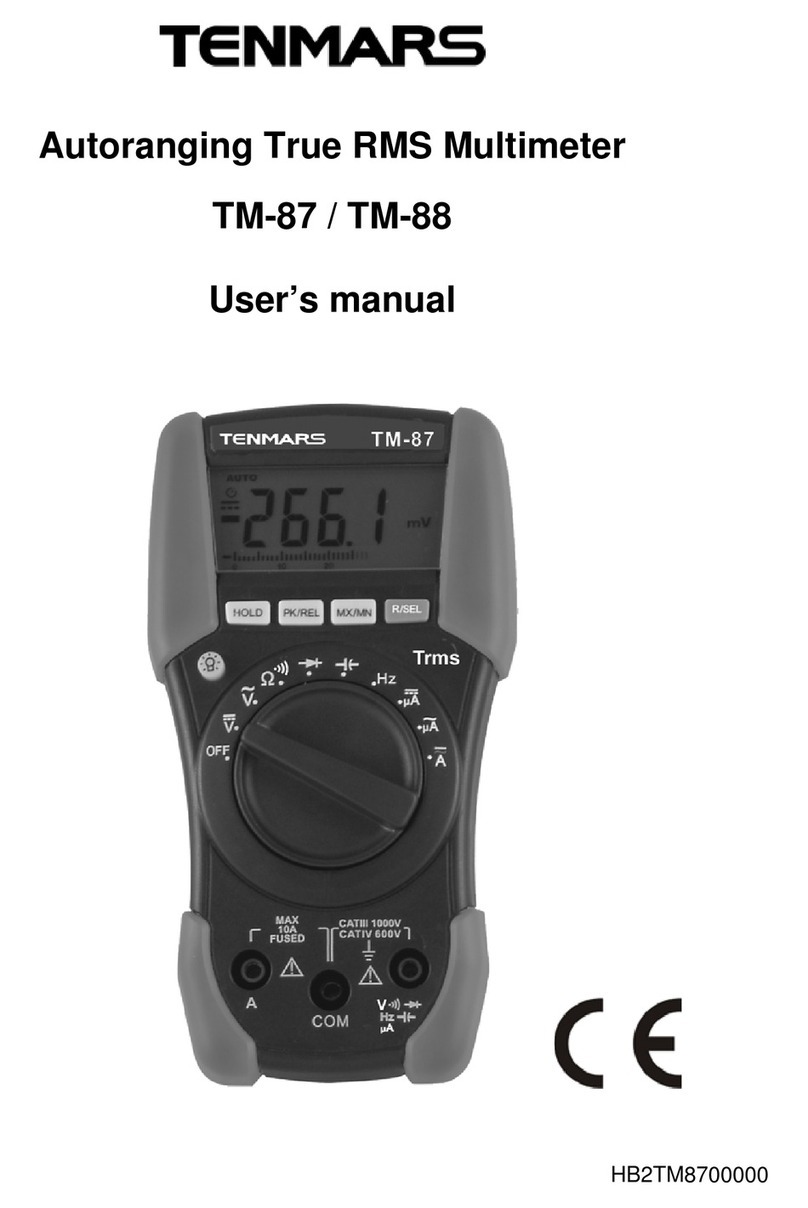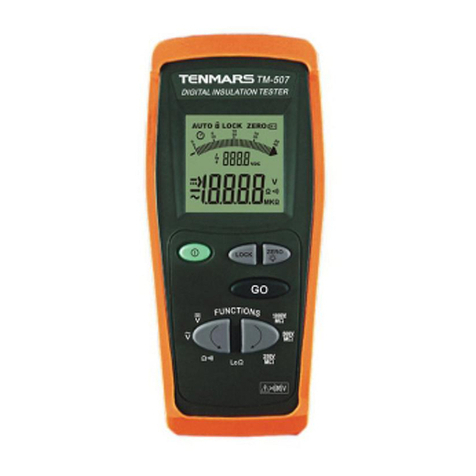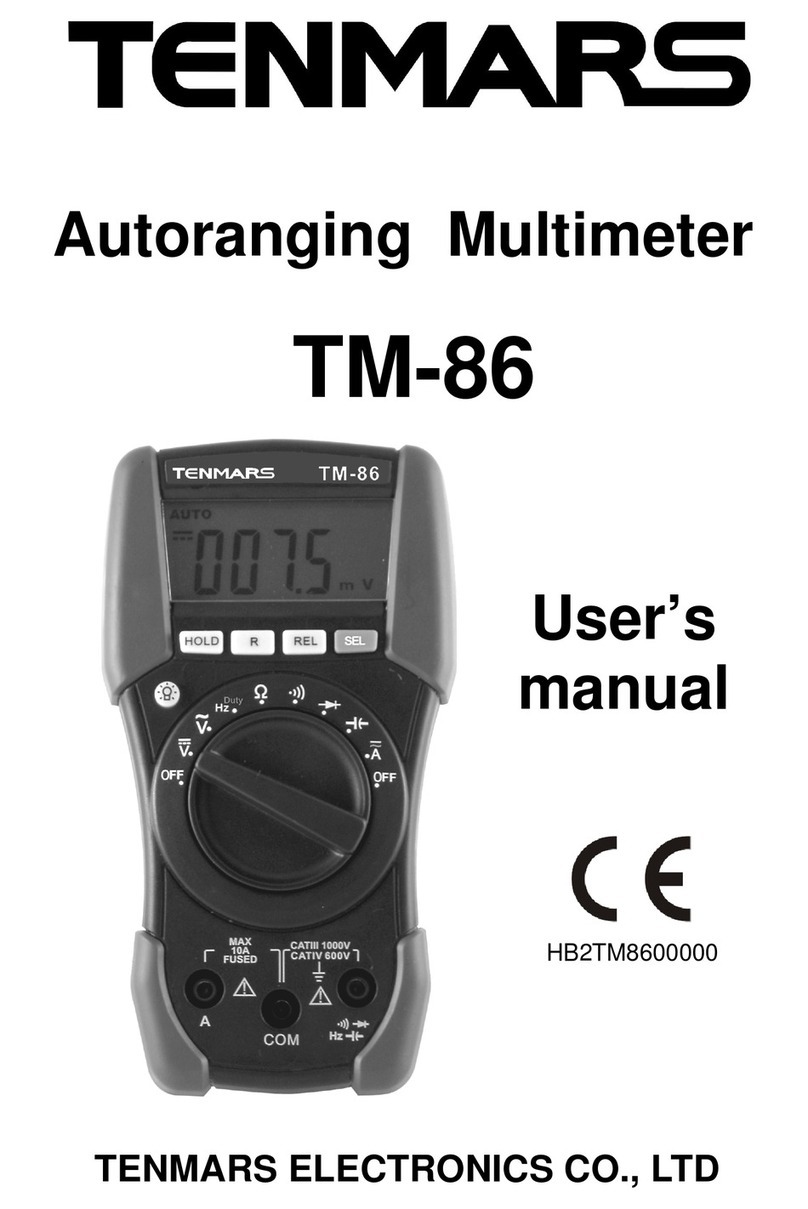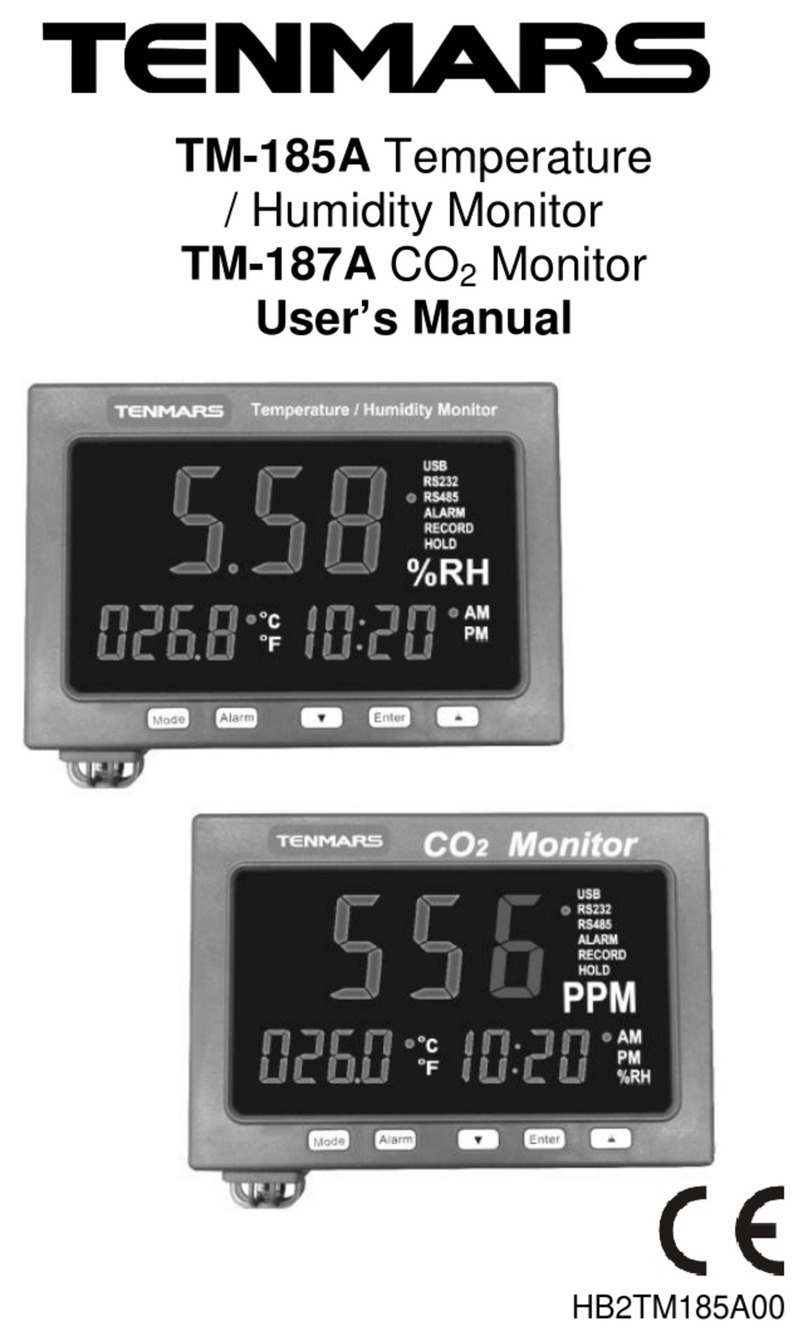5. Do not test on or connect to any circuit with voltage
or current exceeding the specified overload
protection.
6. When measuring resistor, Please do not add any
voltage, though there is a protection circuit,
excessive voltage will still cause malfunction.
7. When measuring current, firstly remove the test
leads of common and voltage / resistance.
8. Whenmeasuring current, anystrong current nears or
closes to the clamp jaw will affect the accuracy.
9. This instrument is not availablefor the non-sine wave
AC signal, otherwise there will be a great error.
10. When measuring current, always put the tested
conductor in the center of the clamp jaw so as to
obtain a more accurate reading.
11. Duringmeasuring, ifthe value of readingorindication
of sign remain unchanged, check if the DATA HOLD
function is active and the symbol HOLD MANU is
displayed on the LCD.
12. In order to avoid reading incorrect data, you have to
replace the batteries immediately when the symbol
BAT appears on the LCD.
13. Do not touch the circuit board before you take any
adequate action, and thus prevent from any damage
of contamination and static electricity.
4.2. AC CURRENT (ACA) MEASUREMENT































